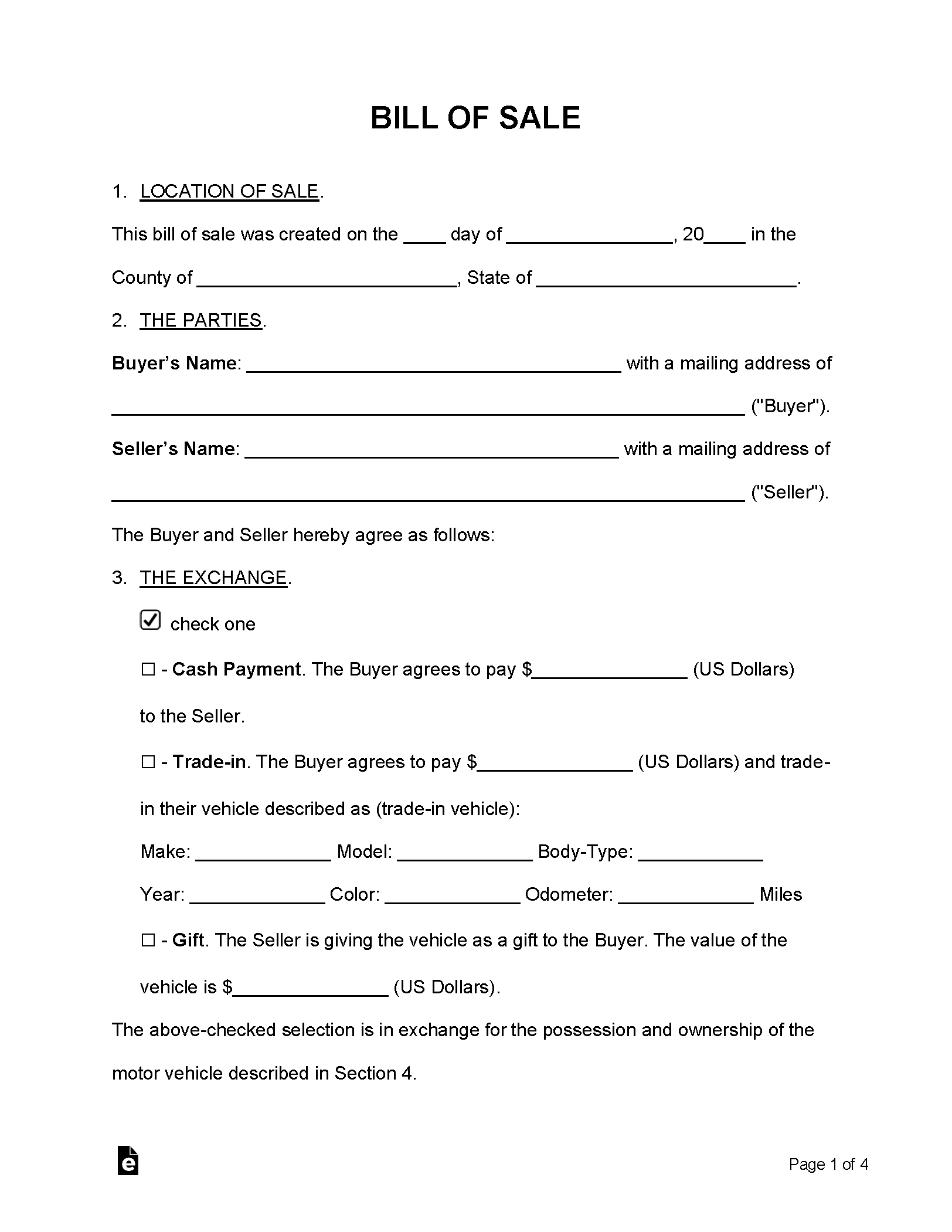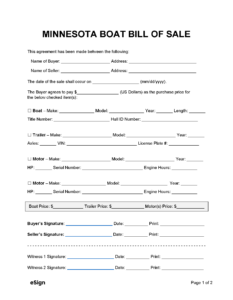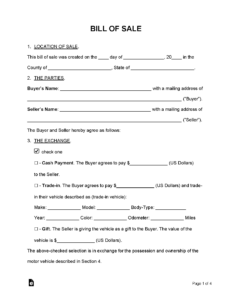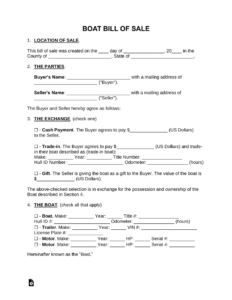When you’re buying or selling something valuable, whether it is a vehicle, a boat, or even a piece of specialized equipment, the last thing anyone wants is a misunderstanding down the road. This is where a robust and legally sound document comes into play. It acts as a clear, written record of the transaction, ensuring both parties are on the same page and that there’s undeniable proof of ownership transfer. Without it, you could face future disputes about payment, condition, or even who truly owns the item.
Think of it as your safety net in any private sale. It provides a detailed account of what was sold, to whom, for how much, and on what date. This level of detail is crucial not only for peace of mind but also for legal protection should any issues arise later on. Having a clear, agreed-upon document minimizes ambiguity and ensures a smooth, transparent exchange for everyone involved, protecting both the buyer and the seller from potential headaches.
Why a Proper Bill of Sale is Your Best Friend
A well-crafted bill of sale serves as irrefutable evidence of a transaction, offering crucial legal protection to both the buyer and the seller. For the buyer, it is proof of ownership, essential for registration, insurance, and demonstrating that the item was legitimately acquired. For the seller, it provides a record that the item has been sold and responsibility transferred, helping to mitigate any future liability concerning the item after it leaves their possession. This document is not merely a formality; it is a vital shield in the often complex world of private sales.

Consider the potential scenarios without one. If you sell a car and the new owner gets into an accident before the title is transferred, without a bill of sale, you might still be held partially liable. Conversely, as a buyer, imagine purchasing an item only to have the seller later claim you never paid or that the item wasn’t what you thought it was. A properly executed document prevents these costly and time-consuming disputes by clearly outlining the terms and conditions agreed upon by both parties, leaving no room for doubt or misinterpretation.
Key Elements Your Template Must Have
To ensure your document is as effective as possible, a proper bill of sale template must include several non-negotiable components. Missing even one piece of information could weaken its legal standing or lead to future complications. It is imperative that these details are filled out accurately and completely at the time of the transaction, leaving no blanks that could be filled in later by an unscrupulous individual.
Here are the essential elements:
- Buyer and Seller Information: Full legal names, addresses, and contact details for both parties. This clearly identifies who is involved in the transaction.
- Item Description: A comprehensive description of the item being sold, including make, model, year, color, serial number, Vehicle Identification Number VIN if applicable, or any unique identifiers. The more specific, the better.
- Purchase Price and Payment Details: The exact amount of money exchanged, the method of payment cash, check, bank transfer, and confirmation of receipt of payment.
- Date of Sale: The specific date the transaction occurred and ownership officially transferred.
- “As Is” Clause or Warranty Disclaimer: Most private sales are “as is,” meaning the buyer accepts the item in its current condition with no guarantees. It is crucial to state this explicitly.
- Signatures: Both the buyer and seller must sign the document, acknowledging their agreement to the terms. Ideally, a witness signature or notarization adds an extra layer of authenticity.
Beyond these core elements, some templates might also include sections for specific conditions, such as payment plans, delivery arrangements, or a declaration that there are no liens against the item. Always ensure you are using a template that can accommodate any unique aspects of your specific sale. A thorough document is your best defense against future disputes.
Choosing and Customizing Your Proper Bill of Sale Template
Finding a suitable proper bill of sale template is easier than ever, with numerous resources available online. Many legal document websites, government vehicle registration departments, and even reputable financial institutions offer free or low-cost templates that can be downloaded and customized. However, it is crucial to select a template that is appropriate for the type of item you are selling or buying, as requirements can vary significantly between a car, a boat, a pet, or general merchandise. Always check that the template aligns with the specific asset you are transferring ownership of.
Once you have chosen a base template, the next critical step is customization. While a general template provides a solid foundation, tailoring it to your specific situation ensures all unique aspects of your transaction are covered. For instance, if you are selling a classic car, you might want to add a section about its historical significance or unique modifications. If it is a pet, details about its health records, vaccinations, and microchip information would be vital. This personalization enhances the document’s effectiveness and clarity for both parties.
Furthermore, it is highly recommended to be aware of any state-specific or local legal requirements that might apply to your transaction. While a general template covers the universal basics, some jurisdictions may have particular mandates for certain types of sales, such as specific disclosures for vehicles or boats. A quick search of your state’s Department of Motor Vehicles DMV website or a brief consultation with a legal professional can clarify these nuances, ensuring your bill of sale adheres to all applicable laws.
Finally, when filling out your chosen and customized template, accuracy and completeness are paramount. Every field should be filled in clearly and legibly, with no room for ambiguity. If anything is unclear, ask questions before signing. Creating two identical copies, one for the buyer and one for the seller, both signed by all parties, is standard practice. This ensures both individuals have their own verified record of the transaction, providing an essential layer of security and proof for both parties involved.
Having a meticulously prepared and signed document provides undeniable proof of the transfer of ownership, protecting both buyer and seller from potential legal entanglements and misunderstandings down the line. It ensures that the transaction is transparent, legally sound, and mutually understood, creating a positive experience for everyone involved and safeguarding your interests long after the exchange is complete.



